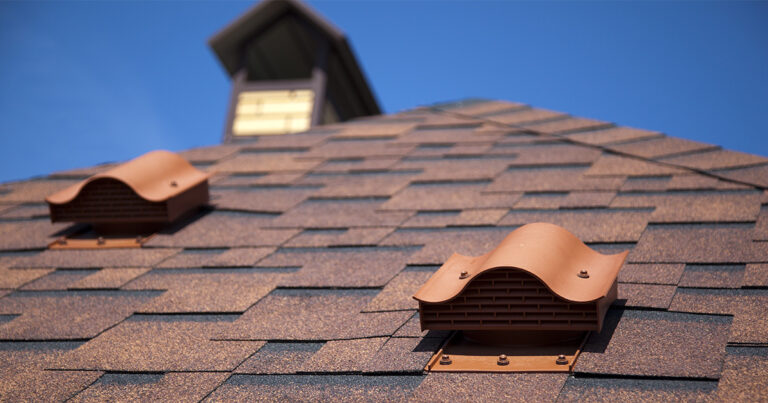Investing in Solar: The Advantages for Florida Homeowners
Florida, known as the Sunshine State, boasts stunning weather, sandy beaches, and a lively culture. With over 230 sun-filled days per year, it’s not surprising
FL License No. CCC1334089/CGC1532627
(Available 24/7)

If you live in a house with a flat roof, you might have noticed some problems. Most importantly, you may have felt like your attic is too hot or too cold for comfort. This could mean that your home has inadequate ventilation — or that it has no ventilation at all. Proper ventilation can help your home stay comfortable by ensuring that the temperature and humidity levels within it stay stable at all times of the year. If you want to know more about why ventilation is important and how to get started improving yours, here are some tips:
Moisture buildup: If you live in a humid climate, your roof’s surface can collect moisture and create ice dams. Ice dams are an issue because they can cause leaks in your roof. The best way to prevent this from happening is by providing ventilation for your attic through soffit vents and ridge vents. These openings allow warm air to escape from the attic and keep it from getting too hot or trapping moisture against the roof’s surface.
Heat buildup: If there isn’t enough ventilation for hot air to escape from your attic, then it will build up inside of your home’s walls as well as on top of them! This heat gives off condensation that can rot wood framing materials or lead them astray over time due to their expansion rates being greater than those of insulation materials used inside homes today (such as fiberglass). The best way around this problem is by installing ridge venting systems which pull out any excess heat trapped between rafters before too much damage takes place under foot due to prolonged exposure at high temperatures over long periods of time.”
The biggest reason you need to ventilate your attic is that it helps keep the temperature down. The more hot air you can get out of the attic, the less it will be trapped inside and create a greenhouse effect. Not only will this help keep your home cooler in the summer, but it’ll also reduce energy costs by ensuring that your AC unit doesn’t have to work as hard.
You may also notice that during periods of high humidity in the spring and fall months, when there is little airflow through an attic due to rain or windy conditions outside, the temperature can rise significantly higher than normal—which can cause mold growth on insulation materials like fiberglass batts or cellulose (insulating wood chips) and even damage wood framing members if left unchecked over time.
The most important purpose of roof ventilation is to improve air circulation in the attic. This benefits the entire home, as well as its occupants.
In short: ventilation prevents all kinds of problems that could potentially cost you money if left unchecked over time!
The attic is one of the hottest places in your house. When you install a ventilator, it allows hot air to escape the attic and helps keep your home cooler overall. The cool air that comes back into your home through the vents is called “stack effect.” Since stack effect happens all by itself (without any help from you), it means that an over-ventilated attic will naturally cool down at night when there’s no one using electricity or heating up water for showers or washing clothes.
The more ventilation you have on your roof, the better chance you’ll have of saving money on cooling costs each summer!
Roof ventilation keeps energy costs low. By allowing hot air to escape from the attic, roof vents prevent an uncomfortable buildup of heat inside your home. This not only makes for a more pleasant living space at home, but also saves money on utility bills by keeping temperatures down during summer months and preventing excess heating in winter months.
Roof ventilation improves air circulation in the attic. Having good airflow prevents mold growth as well as mildew buildup on surfaces that aren’t always exposed to fresh air (like under insulation), thereby helping preserve the integrity of your roof over time! And even if water does make its way into the attic space beyond what can be safely removed using dehumidifiers or fans alone — it evaporates quickly thanks again to strategically placed venting pipes which ensure proper drainage without worry about backtracking into living areas below– so long as there’s been adequate planning done beforehand by homeowners who’ve taken steps towards creating an efficient structure before construction began up top!
In short, roof ventilation is an important part of a home’s energy efficiency. It helps to keep the attic cooler and more comfortable during hot weather, and it reduces the risk of mold growth in your house’s damp areas. So if you’re looking for ways to save money on your utility bills this summer—or just want better air quality all year round—take some time today to check out our comprehensive guide on installing a new ventilation system!
For more information or to schedule a free assessment on your roof’s ventilation, give us a call at 941-462-4026!
Florida, known as the Sunshine State, boasts stunning weather, sandy beaches, and a lively culture. With over 230 sun-filled days per year, it’s not surprising
Residing on Florida’s picturesque Gulf Coast offers the perfect combination of sun-soaked days, sandy beaches, and a relaxed lifestyle. However, this region is also susceptible
Residing along the Gulf Coast of Florida presents a unique set of challenges, including scorching heat, high humidity, and the ever-present danger of hurricanes and
Copyright © 2025 Nova Construction and Roofing.
Error: Contact form not found.
Error: Contact form not found.
Error: Contact form not found.
Error: Contact form not found.
Error: Contact form not found.
Error: Contact form not found.